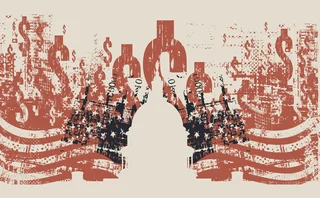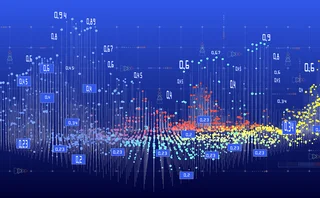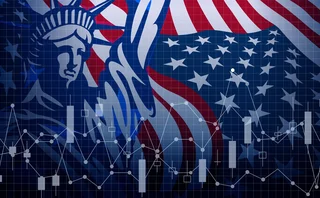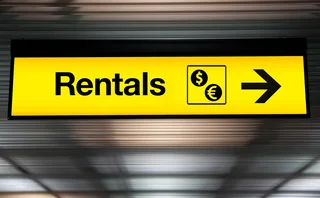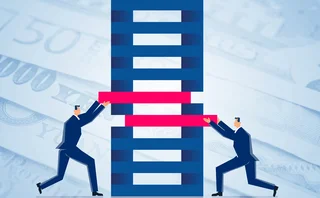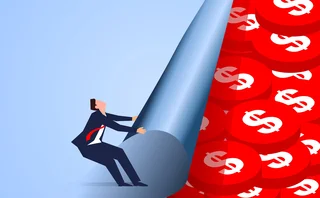
FX dealers bolstered by return of volatility
Vol's resurgence this year has created opportunities for dealers – but also some risks
Back in February 2020, the FX Markets cover feature was titled “Who killed FX volatility?” Then, as if to prove us wrong, Covid arrived and sent markets into turmoil.
After those initial few months, however, the market stress eased and things quickly reverted to a period of low volatility and narrow spreads across G10 pairs.
But recent chaos in global commodity markets and diverging central bank policies between G10 economies have shaken things up again. The headline story of the strengthening US dollar and the rising cost of converting international revenues from local currencies into the greenback has placed increased strain on companies’ balance sheets and profits.
Corporates have suddenly been forced to address currency risk and their foreign exchange hedging strategies, leading some to eye longer-term hedges.
With no end in sight to the war in Ukraine, along with a hawkish Federal Reserve, volatility in global markets will most likely be prolonged. That has prompted other market participants to turn to more complex strategies.
Hedge funds are profiting hugely from these wild swings, especially in the US dollar/renminbi options market – which many consider to be the “trade of the year”.
The demands to protect against and profit from these volatile currency swings have brought a renewed sense of excitement to FX trading desks among the top dealers.
According to data from Greenwich Associates, higher volumes and improved margins have resulted in increased revenues of between 20% and 50% across G10 and emerging markets currencies during the first quarter of 2022.
A recent presentation by EBS to the European Central Bank’s FX committee showed that average top-of-book spreads in euro//US dollar spot reached 1.1 basis point in March, compared to 0.8bp in November 2021.
However, members of the committee also expressed concern about liquidity in FX derivatives and a more challenging environment for funding transactions, especially in emerging market currencies and the FX swap segment. Three-month EUR/USD FX forward points, for instance, have nearly tripled in recent months, and according to the minutes of the May meeting, members suggested it could become a bigger issue if counterparty credit risk and market stress increases.
Of course, increased volatility doesn’t always translate into higher profits for banks, as seen at the end of March when sharp movements in the Japanese yen against the dollar caught some FX options dealers off guard, triggering a scramble to re-hedge exotics books and driving volatility even higher in the process.
Volatility is most certainly alive, then. But like Frankenstein’s monster, some out there may wish it had stayed dead
Only users who have a paid subscription or are part of a corporate subscription are able to print or copy content.
To access these options, along with all other subscription benefits, please contact info@fx-markets.com or view our subscription options here: https://subscriptions.fx-markets.com
You are currently unable to print this content. Please contact info@fx-markets.com to find out more.
You are currently unable to copy this content. Please contact info@fx-markets.com to find out more.
Copyright Infopro Digital Limited. All rights reserved.
As outlined in our terms and conditions, https://www.infopro-digital.com/terms-and-conditions/subscriptions/ (point 2.4), printing is limited to a single copy.
If you would like to purchase additional rights please email info@fx-markets.com
Copyright Infopro Digital Limited. All rights reserved.
You may share this content using our article tools. As outlined in our terms and conditions, https://www.infopro-digital.com/terms-and-conditions/subscriptions/ (clause 2.4), an Authorised User may only make one copy of the materials for their own personal use. You must also comply with the restrictions in clause 2.5.
If you would like to purchase additional rights please email info@fx-markets.com
More on Our take
Trump’s FX impact: a tale of two terms
Traders say Trump version 2.0 is already proving a much trickier task to manage than the original, and have had to adapt
Turn of the skew: FX options dealers balance fragile market
Calls-versus-puts demand flips wildly in response to geopolitical events
Banks seek to advance predictive pricing models
AI and machine learning-based tools could give FX desks the power to forecast currency movements
FX traders revel in March Madness
Chaotic Trump policies finally bring diversity to flows – to the delight of market-makers
Could LPs explore renting out their client franchise?
Connecting regional banks with sophisticated clients may see dealers evolve to become liquidity distribution hubs
Higher rates see corporates reassess FX structured products
Treasurers are getting a taste for dual currency notes and structured forwards
Quants dive into FX fixing windows debate
Longer fixing windows benefit clients, but predicting how dealers will respond is tough
Low FX vol regime fuels exotics expansion
Interest is growing in the products as a way to squeeze juice out of a flat market

